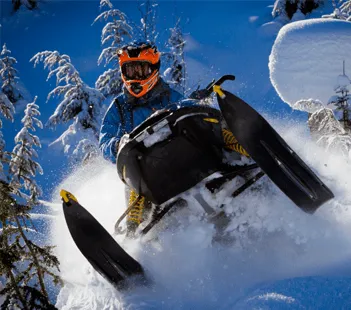January 01, 2017

Winter Sports Injury Prevention Tips: Snowmobiling
More than 1.5 million snowmobiles in the United States will venture into the back country each winter. The majority of snowmobile accidents involved collisions with fixed or moving objects such as fence posts, barbed wire, trees, cars, and other snowmobiles.
Last year, the National Safety Council recorded about 156 deaths associated with snowmobiles. Fatalities have resulted from riding on thin ice, freezing when stranded after a breakdown and decapitation by running through a barbed wire fence.
Contributing factors in accidents examined included excessive speed, product failure due to design or deterioration, darkness, bad weather, and the fearless nature of some drivers.
Injuries associated with snowmobiles are relatively severe and drivers make up the majority of those injured.
Snowmobiling Safety Tips
- Follow local regulations and operation instructions.
- Become familiar with the particular model of snowmobile before driving. A number of accidents involved veteran drivers accustomed to a different make or model.
- Wear appropriate equipment. Wear goggles, helmets with chin straps, and protective clothing.
- Inspect the entire machine. Check the brakes, throttle control, lights, and emergency shut-off switch before departing. Never start without a full tank of gas.
- Take repair equipment with you. Take extra spark plugs, tools, a first aid kit, and other repair and survival supplies such as flares and matches.
- Know the terrain. Know where fences, gullies, and rocks may be hidden. Beware of open bodies of water and thin ice.
- Avoid driving at night and in bad weather. A single strand of barbed wire is hard to see.
- Be alert. Remember that the loud noise generated by the snowmobile may prevent hearing approaching trains and cars. Be alert.
- Travel in groups. Travel in groups and always make sure others know your group’s plans and routes. Avoiding changing those plans in the field.
- Stay sober. Never drink intoxicating beverages and drive at the same time.
Source: American Academy of Orthopaedic Surgeons ; Consumer Product Safety Commission
Download Snowmobiling Safety Tips PDF
© 2012 Denver Health

